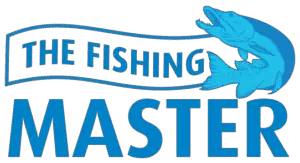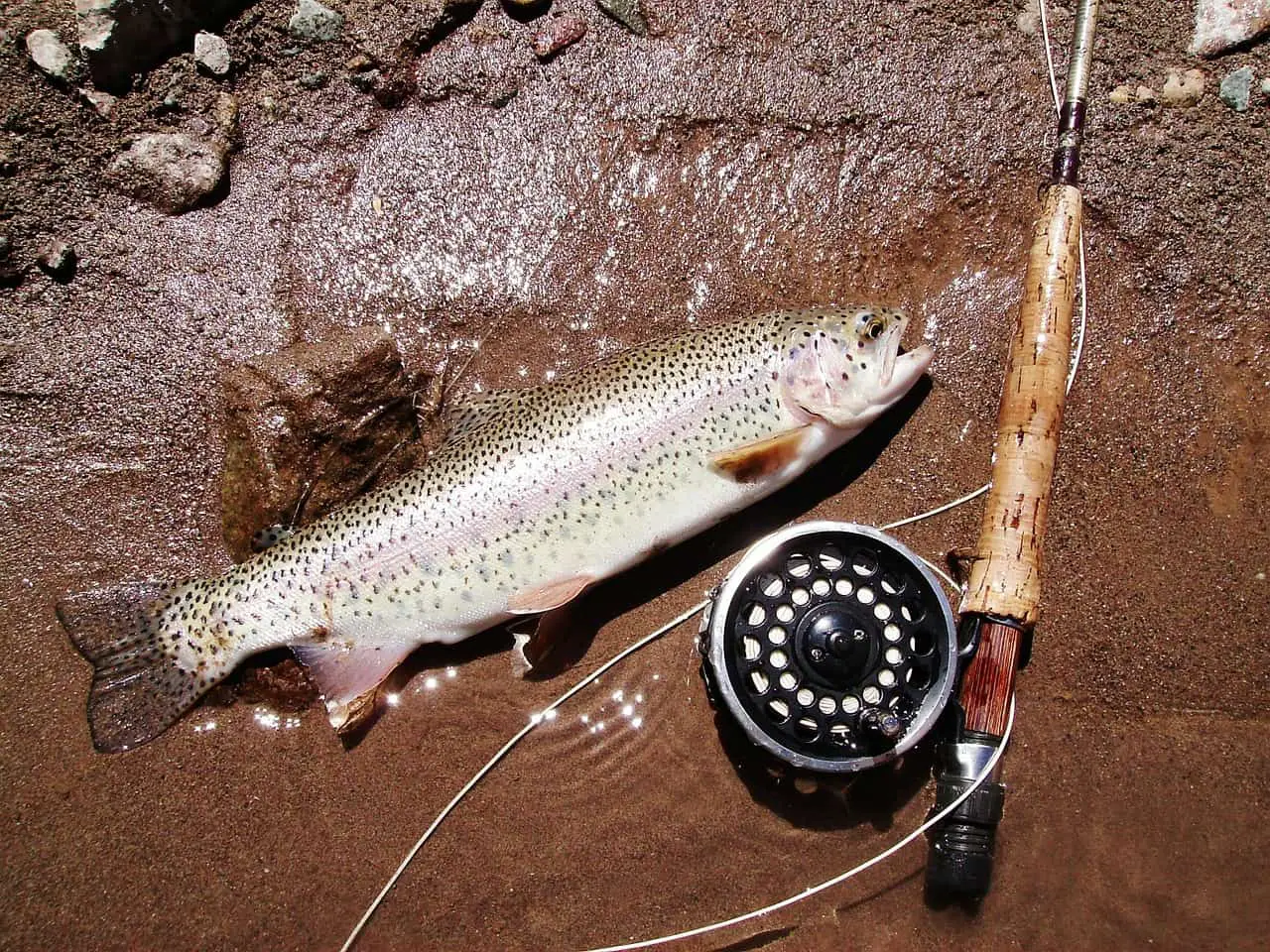Table of Contents
*This post may contain affiliate links. As an Amazon Associate we earn from qualifying purchases.
Trout are among the most popular freshwater game fish in America, and fishing for trout, which you often find in freshwater lakes, ponds, streams and rivers, and even brackish water, can be a rewarding and enjoyable outdoor adventure. If you are new to trout fishing, rest easy, as learning how to fish for trout requires the minimal amount of fishing tackle and gear and a few basic techniques to help you get the most out of your fishing experience.
How to Fish for Trout
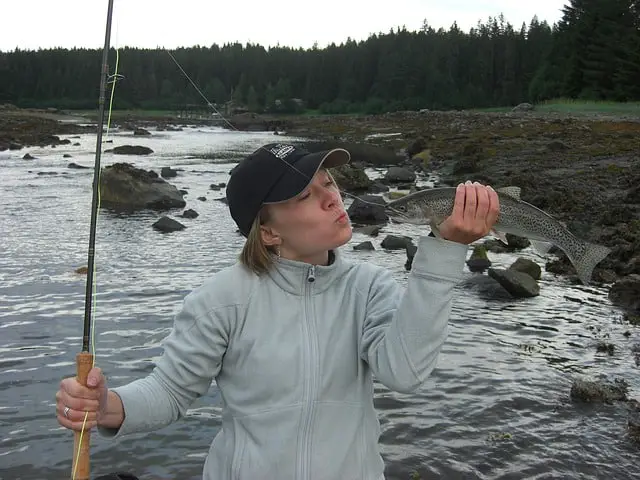
image source: pixabay.com
To learn how to fish for trout, we need to know four things: where to go, what gear we need, what bait or lures we need, and what techniques to use to maximize our chances of landing a trout. Since trout fishing is so popular, many local lakes and ponds stock these fish for recreational fishing. Fishing for trout in streams and rivers can also be rewarding, but it requires different gear and techniques to be successful. Checking with your local fish and game or sporting store should help in locating an excellent fishing spot.
Let’s look at some basic techniques and equipment needed when fishing for trout. The first thing to get is a fishing license. Most states require a fishing license if you are over 12 years of age, so check with local fish and game wardens on how to obtain a license and what regulations are in force, such as size requirements, limits, and any seasonal regulations you need to be aware of.
Tackle, Bait and Gear
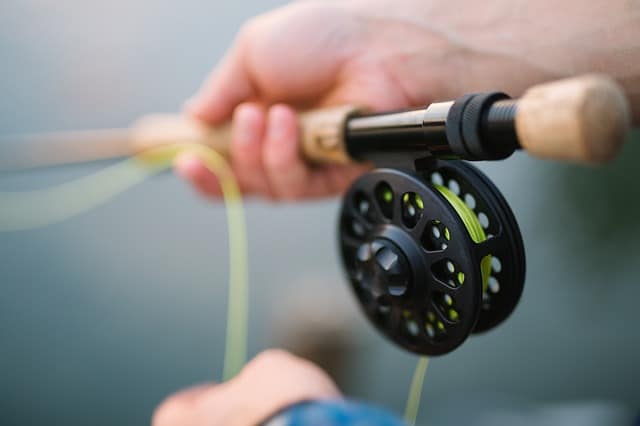
image source: pixabay.com
The good news is that you can fish for trout with a minimal amount of gear. A fishing pole and a reel, some bait, and basic tackle and you’re ready to go!

Basic Fishing Setup
- A 6ft. spinning rod
- Light spin-casting reel with 4 to 6 lb test line
- Bait hooks size #8 to #14
- Small split shot
- Small to medium bobbers
- Fishing knife
- Worms or Nightcrawlers
- Spinners
- Power bait or eggs

Fly-fishing Setup
- Fly-fishing is another popular method of trout fishing. It involves a little more specialized equipment.
- A 9-foot graphite 5 weight fly rod
- Fly reel
- weight forward 5 weight fly line
- Tapered monofilament leaders, 4x 7.5 feet long
- Spools of 4x and 5x tippet
- Flies
What gear and bait you use will depend upon where and when you are fishing. Are you fishing in a lake or stream? What are the fishing conditions? is it morning or evening, spring or summer? Which fishing techniques should you use? Having a large tackle selection will give you more options and a greater chance of success. Also, keep in mind that a river or a stream may require different bait than a lake that is regularly stocked. Power bait or dough bait, for example, works better on stocked fish because that’s what they’re used to eating, but it’s is less effective in the wild where the trout have never fed on it.

Where to Go
There are two main habitats where you can find trout. Lakes and ponds (still waters) and rivers and streams (moving waters). The fishing techniques used vary depending on the environment, so this is an important consideration. Trout prefer cool, clear waters that provide an adequate supply of food such as insects and minnows. In lakes and ponds, trout will look for aquatic vegetation and gather around logs, rocks, and inlet streams which provide cooler water and are a good source of food.

When to Go
The spring and fall seasons are generally best for trout fishing as the water temperature isn’t too hot or too cold — a trout’s optimum feeding temperature range is between 50 and 60 degrees Fahrenheit. The best times to fish are in the early morning and late evening when the insect population is abundant and is typically when trout feed.

What to Do
When choosing a spot to fish, look for a place with natural shade and be careful not to disturb the water. Avoid casting your shadow on the water as it may also disturb the fish, and carefully cast upstream to the desired spot.
Lakes and Ponds (Still Water Techniques)

image source: pixabay.com
Bait and Bobber – Using live bait such as a worm or Nightcrawler on the hook, place a small lead weight just above the hook and a bobber about 1 1/2 to 3 foot up the line. This will suspend the bait in the water above the weeds and other aquatic vegetation. You may need to make adjustments to the bobber to find the “sweet spot” but when the bobber wiggles or jerks, a fish is on the line, and it’s time to set the hook and reel it in.
Fishing off the bottom – With this technique, there is no bobber. Place the weight about 1 1/2 feet above the hook. This will allow the lead weight to sink to the bottom and the bait will float above it. This technique is useful when the fish have gone to the deeper waters, but keep your eye on the line for bites, since you don’t have a bobber.
Spinners, Spoons, and Flys – The use of lures is to mimic the small minnows, insects, and leeches, which are favorite foods of trout. Cast the lure out and let it sink before reeling it in. The movement of the lure will attract the fish.
Rivers and Streams (Moving Water Techniques)
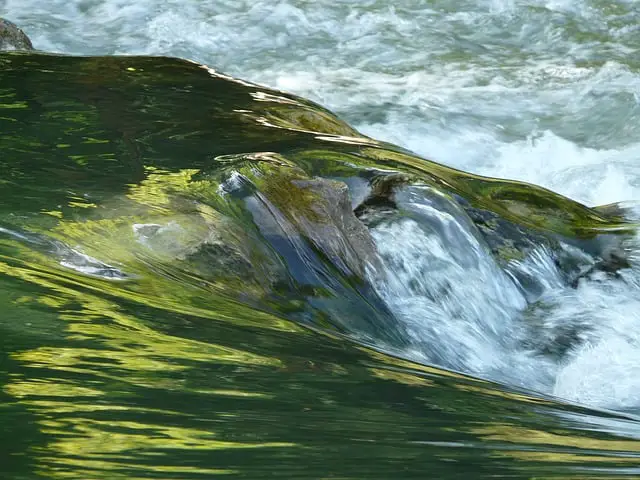
image source: pixabay.com
Rivers and streams are dynamic environments, and while there is generally a current, there are also spots where the water will deepen into a pool and the river or stream will take on the characteristics of a still body of water, providing an opportunity to try some the lake techniques.
Casting a Spinner or Spoon – When fishing in moving waters it is the movement of the current that determines how the lure moves. Cast the spinner upstream and as it drifts keep as much line as possible out of the water. When the spinner turns toward the shore and is downstream, reel it slowly to attract trout.
Drifting Bait Worms or Power Bait – Place split shot weights above the bait. You want enough keep the bait a few inches above the bottom. Cast upstream and let the current drag the bait. You can add a bobber to the line to help track where the bait is drifting.

Trout Species
There are many species of trout, but there are three that most anglers are familiar with.
- Rainbow trout – This species is native to the western United States, and it is a relative of the salmon family. The rainbow trout is a beautiful multi-colored fish with spots and a red streak on its side. Rainbow trout can reach up to 30 inches in length and are found in rivers and streams. They are also commonly stocked in lakes.
- Brown Trout – This species was introduced to the United States in 1883. They are occasionally found in warmer waters although they prefer cooler waters like thier cousins. They range from 11 to 30 inches in length, depending on their environment.
- Brook Trout – This species was stocked in many lakes in the 1900s. Typically found in high mountain lakes these trout are smaller, generally 5 to 7 inches long, although in larger rivers they can reach a length of 25 inches. This species is not technically a trout as it is a member of the Char family.

Catch and Release
Freshly grilled trout is a great way to enjoy your catch, but not everyone wants to keep the fish they catch. Want to know how to fish for trout without hurting them? There are few things to keep in mind if you want to catch and release trout to keep them alive.
- Use barbless hooks to minimize the amount of damage that occurs when you hook a trout. Barbless hooks are easier to remove and cause less injury.
- Don’t tire the fish out. Land the fish as quickly as you can to avoid the fish’s overexertion.
- Keep your hands wet when handling the fish and try to keep it in the water.
- Use needle-nose pliers to remove the hook. If the hook cannot be removed easily, cut the line near the hook before releasing the fish with it still in its lip. The hook will rust away after a while, and it won’t hurt the trout.
- Before releasing the trout, revive it by holding it in the current.
- If you want to take a picture, make sure you have everything setup ahead of time to minimize the time the fish spends out of water.
Conclusion
Trout fishing can be one of the most enjoyable ways to spend time outdoors, and we hope you now have a better idea of how to fish for trout. There are few things that give us the feeling of accomplishment of that first catch or landing a big one, and trout fishing is an activity that can be shared young and old anglers alike. Having learned the basic techniques, trout fishing can become an experience you can enjoy and share with your family and friends all your life.
featured image source: pixabay.com
image icon source: flaticon.com
